- 翰林提供学术活动、国际课程、科研项目一站式留学背景提升服务!
- 400 888 0080
IB DP Maths: AA HL复习笔记3.10.1 Vector Equations of Lines
Equation of a Line in Vector Form
How do I find the vector equation of a line?
- The formula for finding the vector equation of a line is
 This is given in the formula booklet
This is given in the formula booklet- This equation can be used for vectors in both 2- and 3- dimensions

- In 2D the gradient can be found from the direction vector
- In 3D a numerical value for the direction cannot be found, it is given as a vector
- As a could be the position vector of any point on the line and b could be any scalar multiple of the direction vector there are infinite vector equations for a single line
- Given any two points on a line with position vectors a and b the displacement vector can be written as b - a
- So the formula r = a + λ(b - a) can be used to find the vector equation of the line
- This is not given in the formula booklet
How do I determine whether a point lies on a line?
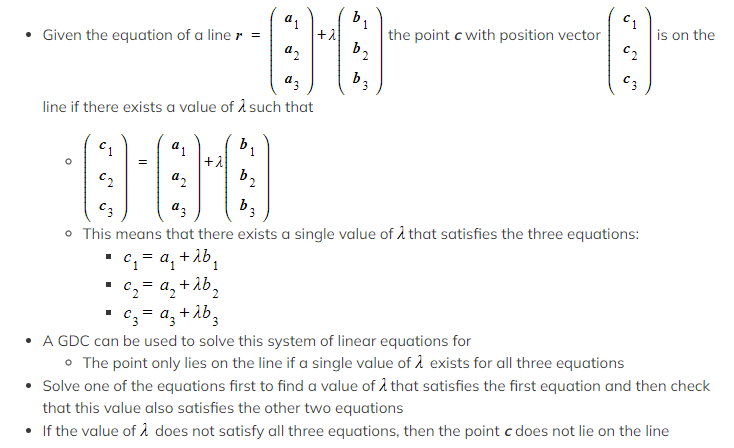 Exam Tip
Exam Tip
- Remember that the vector equation of a line can take many different forms
- This means that the answer you derive might look different from the answer in a mark scheme
- You can choose whether to write your vector equations of lines using unit vectors or as column vectors
- Use the form that you prefer, however column vectors is generally easier to work with
Worked Example
a) Find a vector equation of a straight line through the points with position vectors a = 4i – 5k and b = 3i - 3k
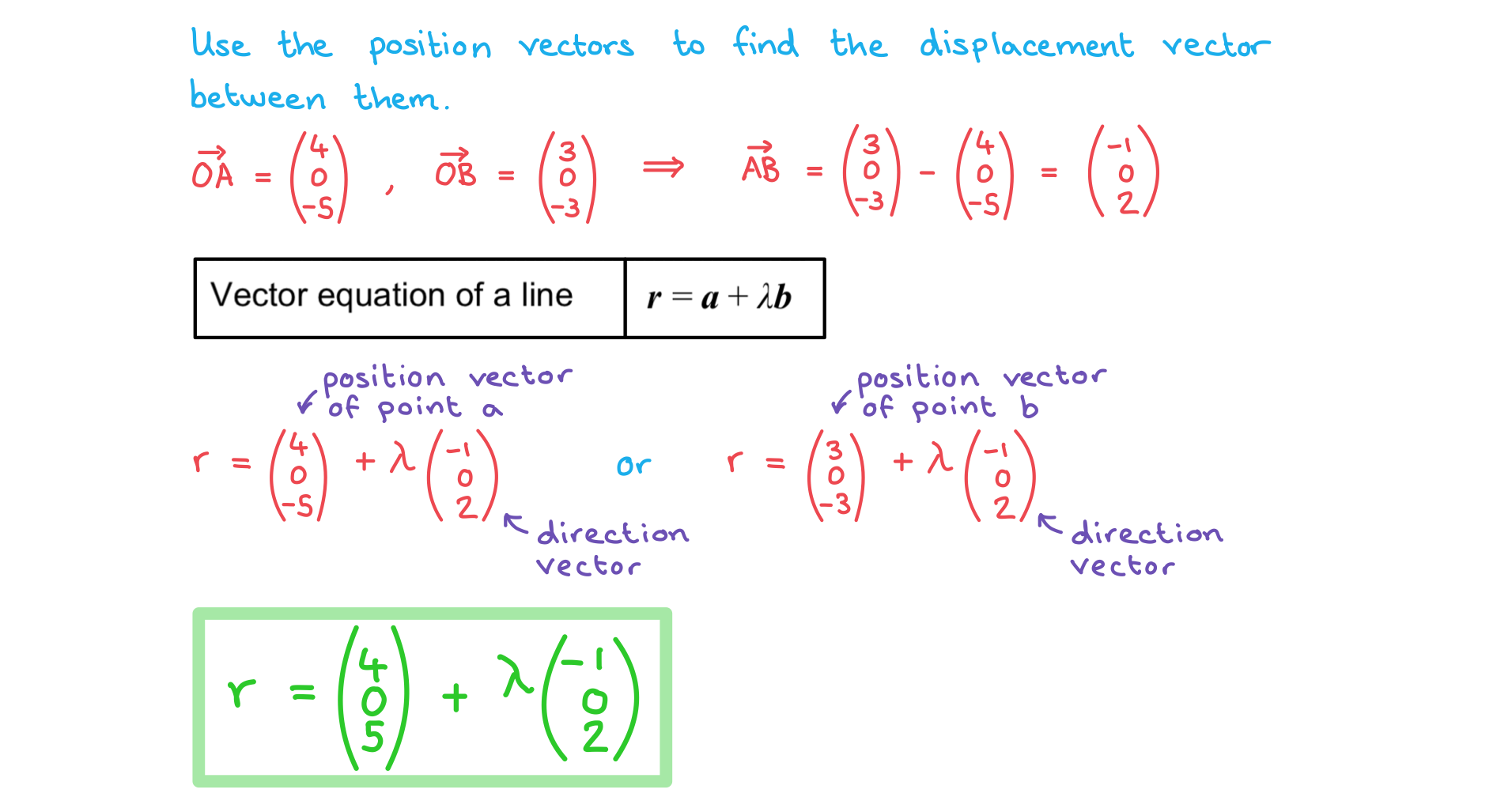
b) Determine whether the point C with coordinate (2, 0, -1) lies on this line.
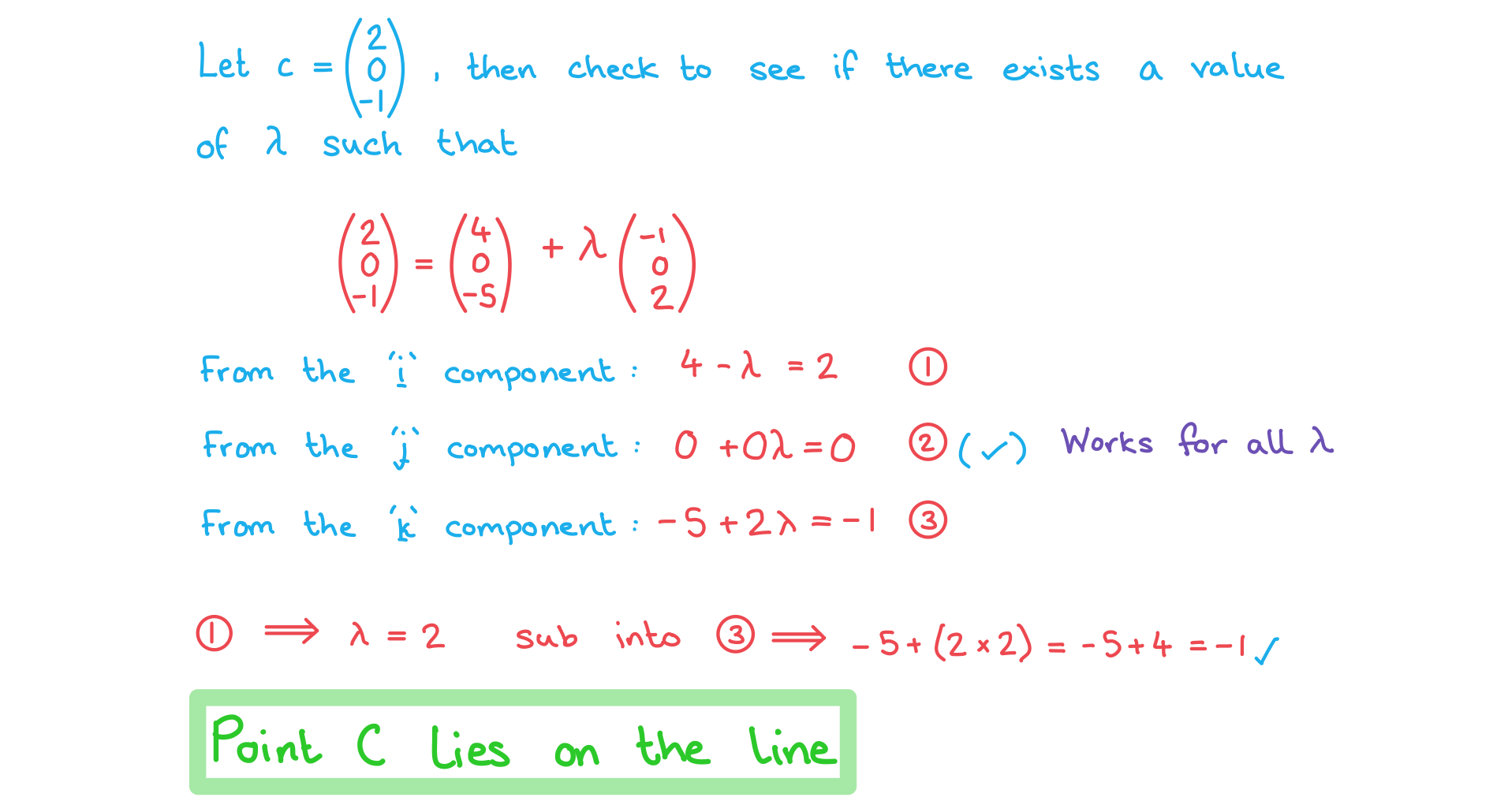
Equation of a Line in Parametric Form
How do I find the vector equation of a line in parametric form?
- By considering the three separate components of a vector in the x, y and z directions it is possible to write the vector equation of a line as three separate equations
 These are given in the formula booklet
These are given in the formula booklet
Worked Example

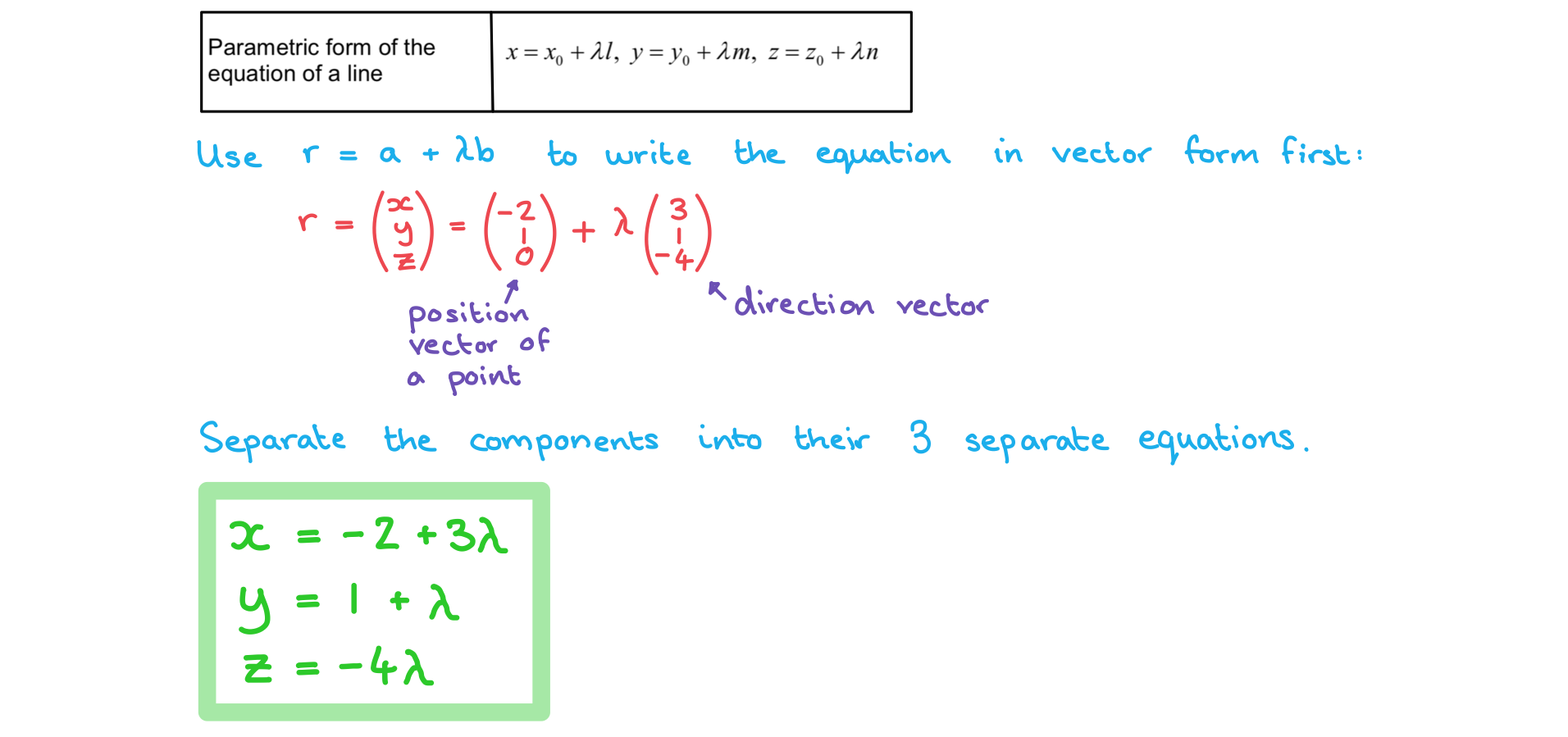
Equation of a Line in Cartesian Form
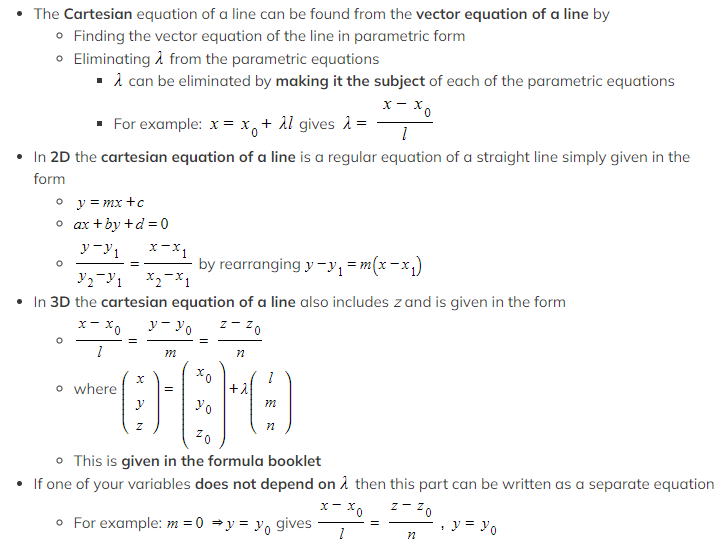
How do I find the vector equation of a line given the Cartesian form?
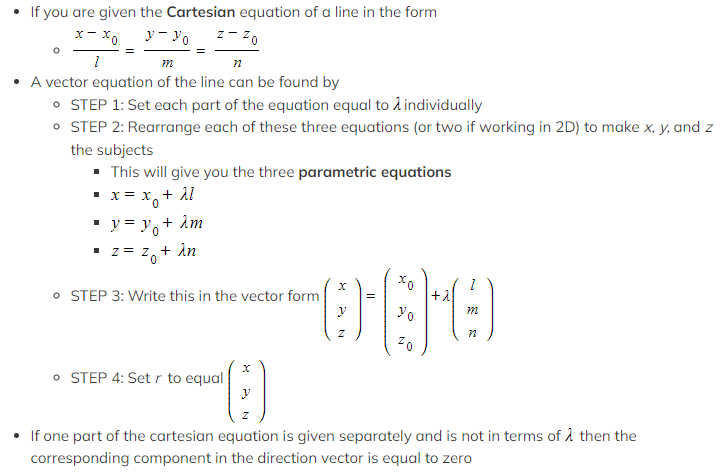
- Worked Example


- Worked Example
转载自savemyexams

早鸟钜惠!翰林2025暑期班课上线

最新发布
© 2025. All Rights Reserved. 沪ICP备2023009024号-1








